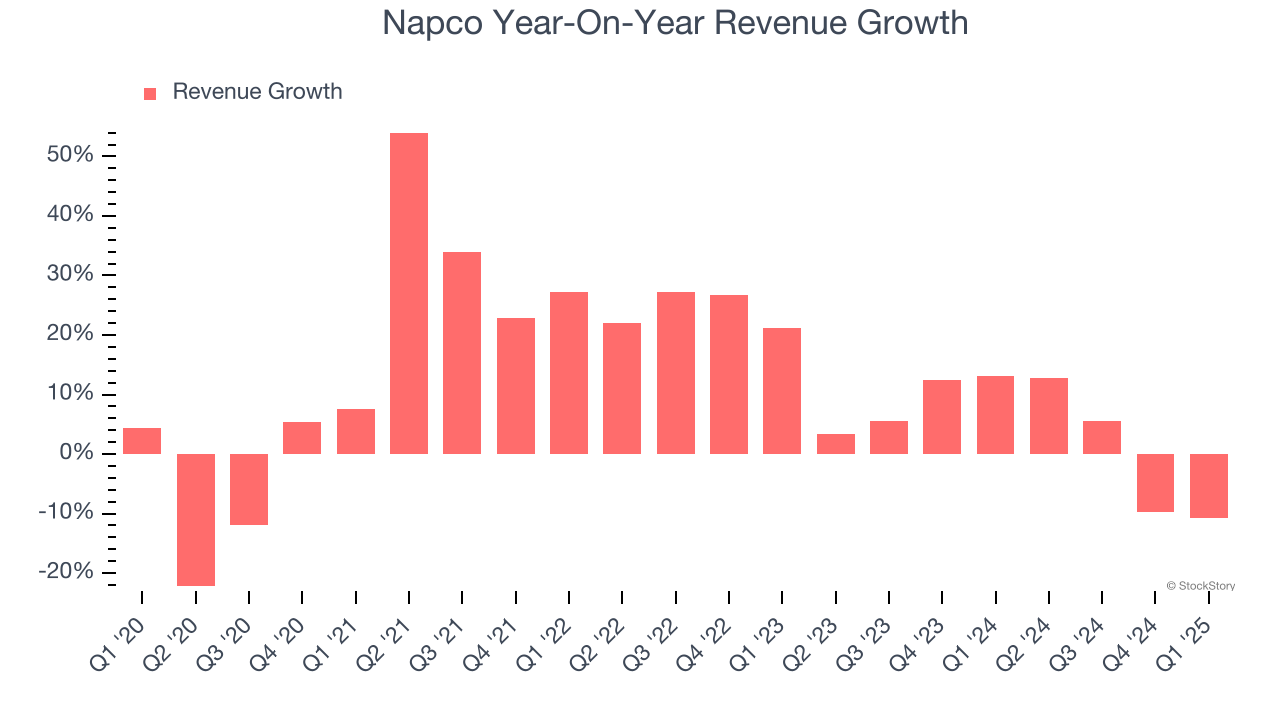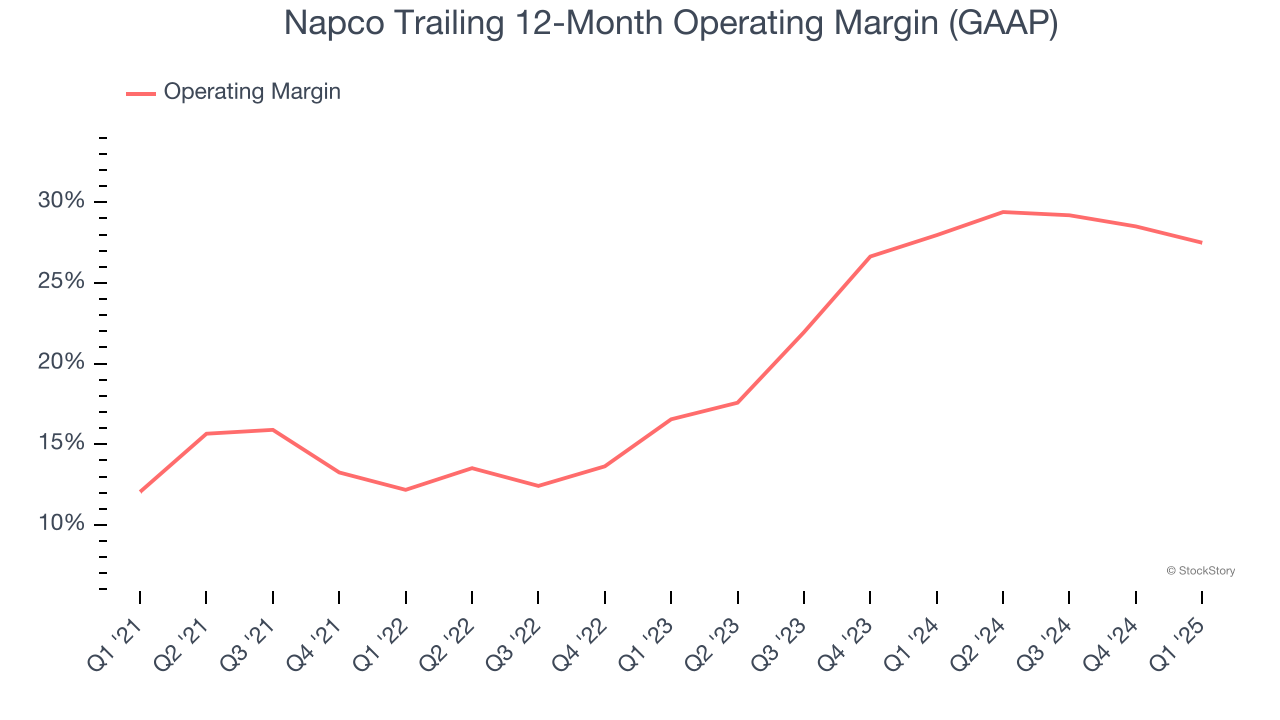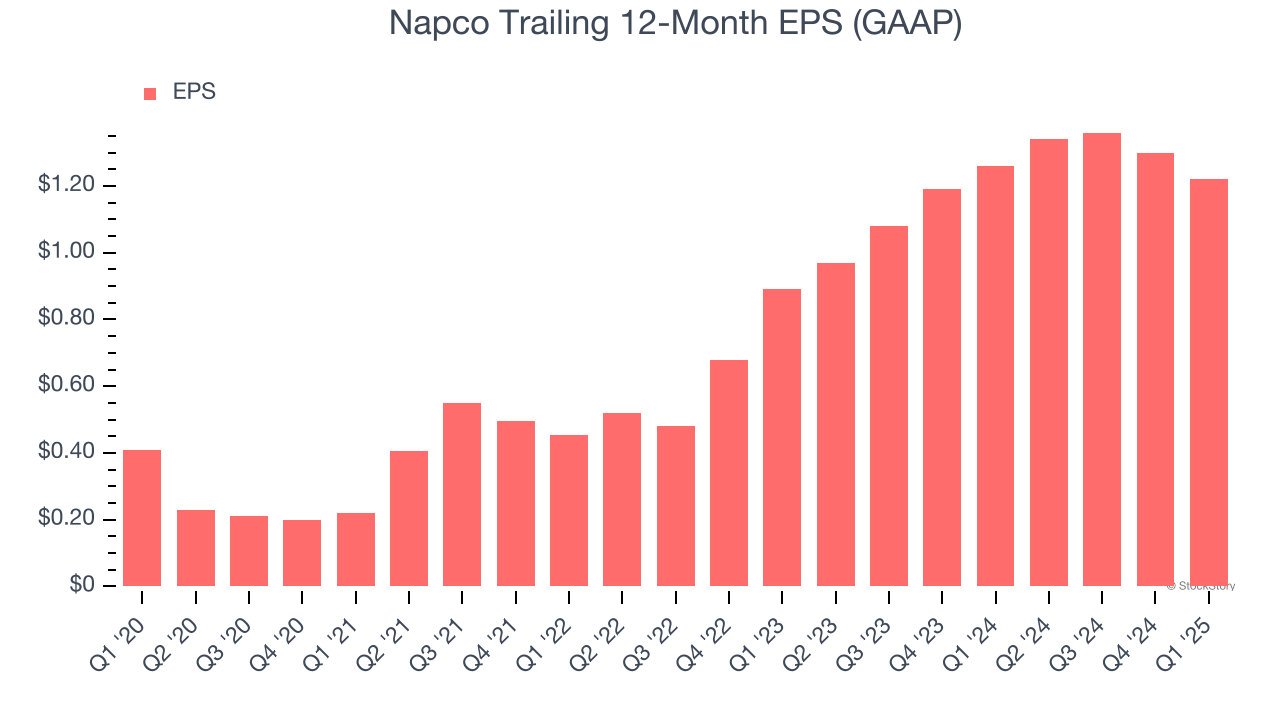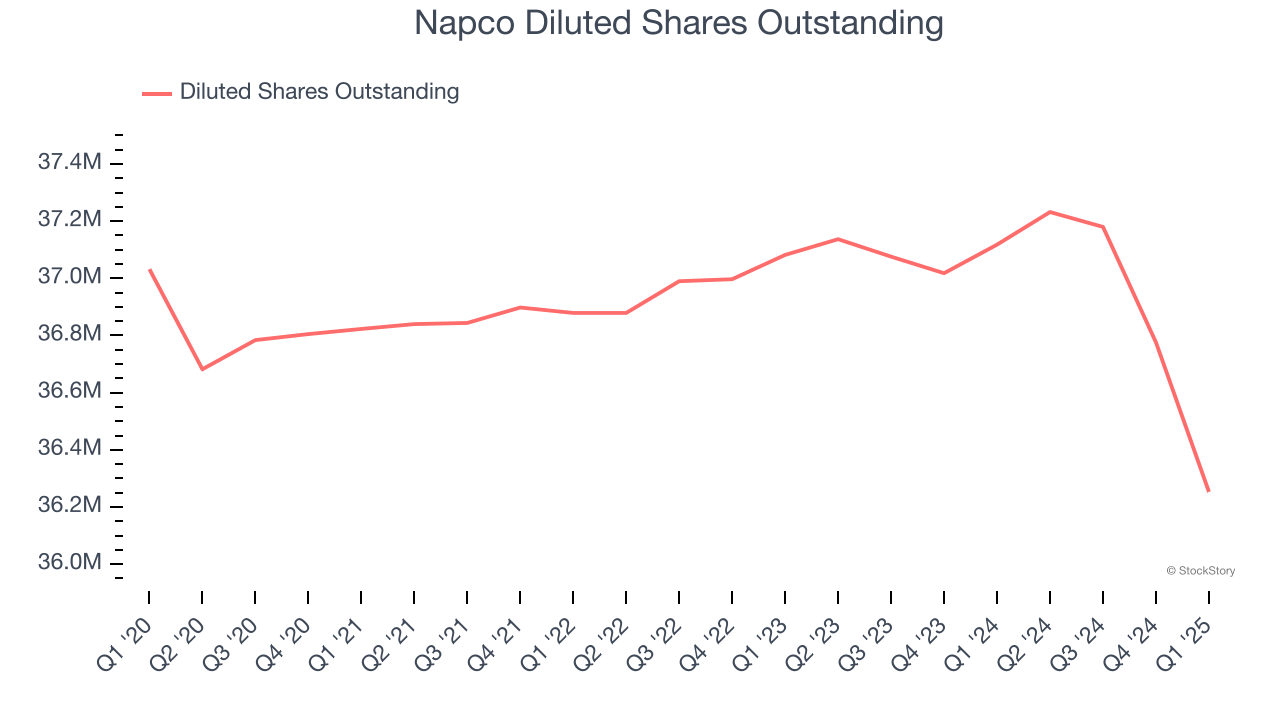
Security systems manufacturer Napco (NASDAQ: NSSC) reported Q1 CY2025 results beating Wall Street’s revenue expectations, but sales fell by 10.8% year on year to $43.96 million. Its GAAP profit of $0.28 per share was 3.7% above analysts’ consensus estimates.
Is now the time to buy Napco? Find out by accessing our full research report, it’s free.
Napco (NSSC) Q1 CY2025 Highlights:
- Revenue: $43.96 million vs analyst estimates of $43.14 million (10.8% year-on-year decline, 1.9% beat)
- EPS (GAAP): $0.28 vs analyst estimates of $0.27 (3.7% beat)
- Adjusted EBITDA: $13.16 million vs analyst estimates of $11.8 million (29.9% margin, 11.5% beat)
- Operating Margin: 25.4%, down from 29.4% in the same quarter last year
- Free Cash Flow Margin: 84.2%, up from 24.3% in the same quarter last year
- Market Capitalization: $865.6 million
Richard Soloway, Chairman and CEO, commented, "With the completion of our third quarter of Fiscal 2025, we are pleased with our 30% adjusted EBITDA return and the continued strong gross margin of 91% of our RSR and the increase of 10.6% to $21.6 million. RSR represents 49% of total revenue in Q3 and our RSR had a prospective run rate of approximately $89 million based on our April 2025 recurring service revenue. The decrease in our equipment revenue for the quarter was primarily due to reduced sales to three of our larger distributors, two of whom were managing their corporate-wide existing inventory levels and the third which was driven by the timing of project work with their customer.
Company Overview
Protecting everything from schools to government facilities since 1969, Napco Security Technologies (NASDAQ: NSSC) manufactures electronic security devices, access control systems, and communication services for intrusion and fire alarm systems.
Sales Growth
A company’s long-term sales performance is one signal of its overall quality. Any business can put up a good quarter or two, but many enduring ones grow for years.
With $181.2 million in revenue over the past 12 months, Napco is a small player in the business services space, which sometimes brings disadvantages compared to larger competitors benefiting from economies of scale and numerous distribution channels. On the bright side, it can grow faster because it has more room to expand.
As you can see below, Napco’s 10.9% annualized revenue growth over the last five years was impressive. This is a great starting point for our analysis because it shows Napco’s demand was higher than many business services companies.

Long-term growth is the most important, but within business services, a half-decade historical view may miss new innovations or demand cycles. Napco’s recent performance shows its demand has slowed significantly as its annualized revenue growth of 3.7% over the last two years was well below its five-year trend. 
This quarter, Napco’s revenue fell by 10.8% year on year to $43.96 million but beat Wall Street’s estimates by 1.9%.
Looking ahead, sell-side analysts expect revenue to remain flat over the next 12 months, a deceleration versus the last two years. This projection is underwhelming and indicates its products and services will see some demand headwinds. At least the company is tracking well in other measures of financial health.
Software is eating the world and there is virtually no industry left that has been untouched by it. That drives increasing demand for tools helping software developers do their jobs, whether it be monitoring critical cloud infrastructure, integrating audio and video functionality, or ensuring smooth content streaming. Click here to access a free report on our 3 favorite stocks to play this generational megatrend.
Operating Margin
Napco has been a well-oiled machine over the last five years. It demonstrated elite profitability for a business services business, boasting an average operating margin of 20.5%.
Looking at the trend in its profitability, Napco’s operating margin rose by 15.4 percentage points over the last five years, as its sales growth gave it immense operating leverage.

This quarter, Napco generated an operating profit margin of 25.4%, down 4.1 percentage points year on year. This contraction shows it was less efficient because its expenses increased relative to its revenue.
Earnings Per Share
Revenue trends explain a company’s historical growth, but the long-term change in earnings per share (EPS) points to the profitability of that growth – for example, a company could inflate its sales through excessive spending on advertising and promotions.
Napco’s EPS grew at an astounding 24.4% compounded annual growth rate over the last five years, higher than its 10.9% annualized revenue growth. This tells us the company became more profitable on a per-share basis as it expanded.

We can take a deeper look into Napco’s earnings to better understand the drivers of its performance. As we mentioned earlier, Napco’s operating margin declined this quarter but expanded by 15.4 percentage points over the last five years. Its share count also shrank by 2.1%, and these factors together are positive signs for shareholders because improving profitability and share buybacks turbocharge EPS growth relative to revenue growth. 
In Q1, Napco reported EPS at $0.28, down from $0.36 in the same quarter last year. Despite falling year on year, this print beat analysts’ estimates by 3.7%. Over the next 12 months, Wall Street expects Napco’s full-year EPS of $1.22 to shrink by 1.8%.
Key Takeaways from Napco’s Q1 Results
It was encouraging to see Napco beat analysts’ revenue expectations this quarter. We were also happy its EPS and EBITDA outperformed Wall Street’s estimates. Overall, we think this was a solid quarter with some key areas of upside. The stock traded up 8.3% to $25.76 immediately after reporting.
Napco put up rock-solid earnings, but one quarter doesn’t necessarily make the stock a buy. Let’s see if this is a good investment. The latest quarter does matter, but not nearly as much as longer-term fundamentals and valuation, when deciding if the stock is a buy. We cover that in our actionable full research report which you can read here, it’s free.


